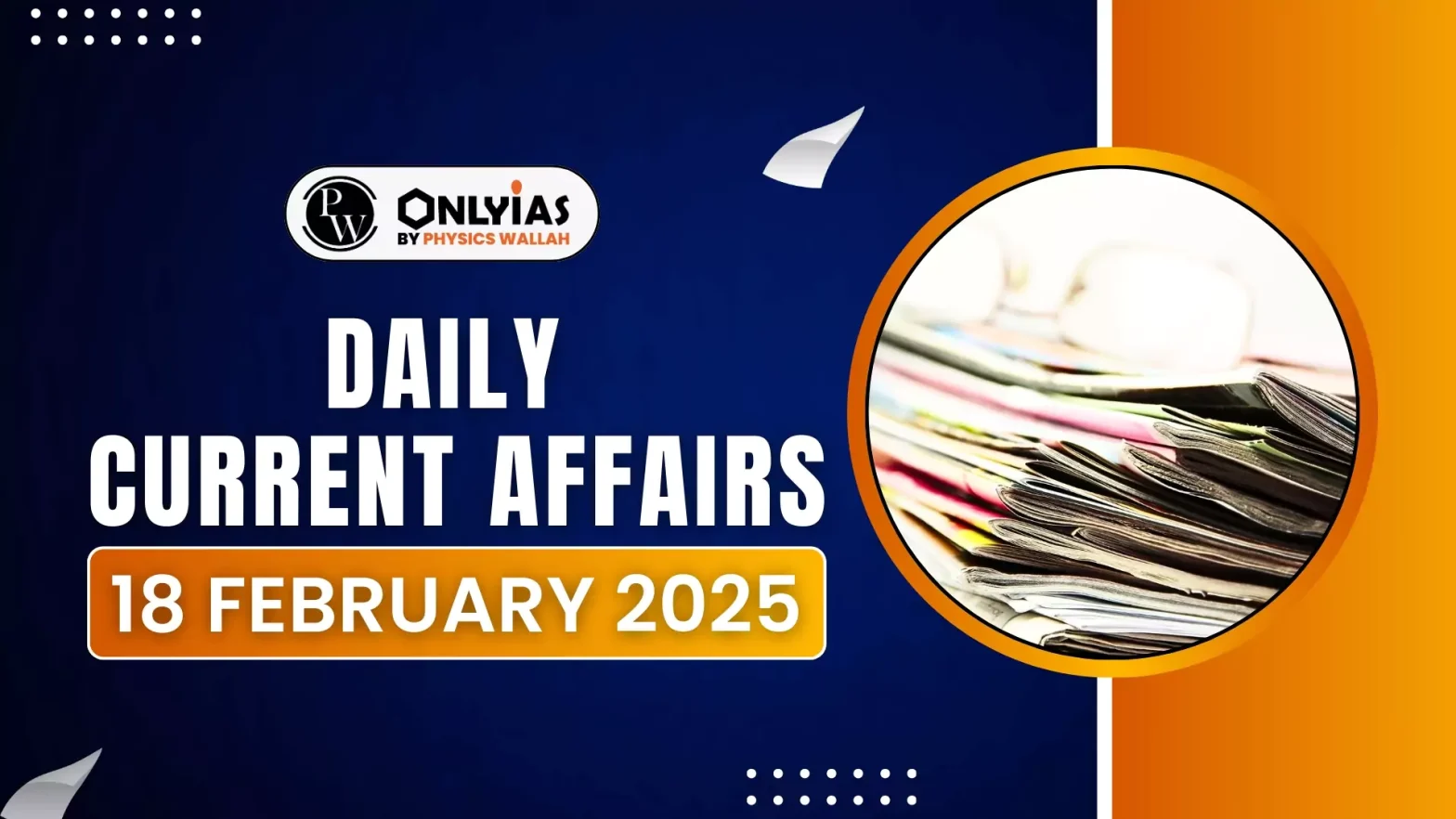The Prime Minister had a two-day state visit to the United States adding momentum to the India-USA bilateral ties.
Milestones in India-US Relations
- 1947: India gains independence; adopts non-aligned foreign policy.
- 1971: India-Soviet Treaty of Friendship; US supports Pakistan in the Indo-Pak war.
- 1974: India conducts Pokhran-I nuclear test; US imposes sanctions.
- 1991: India launches economic reforms; US-India ties begin to improve.
- 2008: India-US Civil Nuclear Agreement signed.
- 2016: India designated as a Major Defense Partner by the US.
- 2020: India-US sign BECA, completing the foundational defense agreements.
|
Key takeaways from the Modi-Trump Meeting
- Bilateral Trade Agreement (BTA): India and the US agreed to negotiate a multi-sector BTA by the end of 2025, focusing on specific goods rather than overall trade liberalization.
- India-US TRUST initiative: TRUST initiative to strengthen supply chains for critical minerals and pharmaceuticals was launched.
- ‘US-India COMPACT (Catalyzing Opportunities for Military Partnership, Accelerated Commerce & Technology) for the 21st Century’, to “drive transformative change across key pillars of cooperation” was launched.
Major Areas of Cooperation Between India and the USA
Defense & Security
- Defense Sales: The US plans to increase military sales to India by billions of dollars, including the potential provision of F-35 stealth fighters.
- India has procured advanced U.S. defense equipment, including Apache and Chinook helicopters, and MH-60R Seahawk helicopters.
- India will procure six additional P-8I Maritime Patrol aircraft to strengthen surveillance in the Indian Ocean.
- The U.S. and India will review arms transfer regulations (e.g., International Traffic in Arms Regulations – ITAR) to streamline defense trade.
- Defense Framework: A new 10-year Framework for the US-India Major Defense Partnership will be signed to enhance defense interoperability, logistics, and technology transfer.
- Co-Production: Plans to co-produce Javelin Anti-Tank Guided Missiles and Stryker Infantry Combat Vehicles in India.
- Maritime Surveillance: Procurement of six additional P-8I Maritime Patrol Aircraft to strengthen India’s maritime surveillance in the Indian Ocean Region.
- Advanced Defense Technologies: Launch of the Autonomous Systems Industry Alliance (ASIA) to boost AI and autonomous technology cooperation.
- New U.S.-India partnerships:
- Anduril Industries & Mahindra Group – Co-developing advanced maritime and AI-enabled counter-drone systems.
- L3 Harris & Bharat Electronics – Developing active towed array sonar systems.
- Military Exercises & Agreements: India and the U.S. conduct joint military exercises like Malabar (naval exercise), Yudh Abhyas (army), Cope India (air force), and Tiger Triumph to enhance defense coordination.
- The “Tiger Triumph” tri-service military exercise will be expanded in scale and complexity.
- Counterterrorism & Intelligence Sharing: Both nations collaborate on counterterrorism, cybersecurity, and intelligence sharing to combat global security threats.
- The U.S. approved the extradition of Tahawwur Rana to India for his role in the 26/11 Mumbai attacks.
- Calls from both countries for Pakistan to take action against perpetrators of the 26/11 Mumbai and Pathankot attacks.
Trade & Investment
- Bilateral Trade: The U.S. is one of India’s largest trading partners.
- In FY24, India had a trade surplus of US$ 36.8 billion with the US.
- Mission 500″ – Doubling Bilateral Trade: It is a new goal to increase U.S.-India trade to $500 billion by 2030.
- Trade Deficit: The US trade deficit with India stood at nearly 100 billion in 2023, with India enjoying a goods trade surplus of 35 billion.
- Bilateral Trade Agreement (BTA): The first phase of a Bilateral Trade Agreement (BTA) will be negotiated by Fall 2025 to improve market access, reduce trade barriers, and strengthen supply chains.
- Key Trade Developments:
- Tariff Reductions: India has taken steps to lower tariffs on US products like motorcycles, agricultural goods, and medical devices.
- India reduced the duty on bourbon whisky from 150% to 100%.
- The U.S. will enhance market access for Indian mangoes, pomegranates, and manufactured goods.
- Increased investment in greenfield industries, with Indian companies investing $7.35 billion in the U.S.
- Foreign Direct Investment (FDI): American companies such as Google, Amazon, Apple, and Tesla have made significant investments in India’s digital economy, manufacturing, and retail sectors.
- Similarly, Indian firms like Infosys, Wipro, and Tata have expanded operations in the U.S., creating jobs.
Technology & Innovation
- Space Collaboration: NASA and ISRO work together on projects like NISAR (Earth observation satellite) among other projects.
- Semiconductor & AI Development: Under the U.S.-India Initiative on Critical and Emerging Technologies (iCET), both nations focus on AI, quantum computing, semiconductors, and 5G/6G technology development.
- Civil Nuclear Cooperation: There are plans to implement the U.S.-India 123 Civil Nuclear Agreement, facilitating U.S.-designed nuclear reactor construction in India.
- India is planning to amend the Atomic Energy Act and Civil Liability for Nuclear Damage Act (CLNDA) to enhance U.S.-India nuclear industry collaboration.
- Launch of the TRUST Initiative: Transforming the Relationship Utilizing Strategic Technology (TRUST) to foster collaboration in defense, AI, semiconductors, quantum computing, biotech, and space.
Health & Pharmaceuticals
- Pharmaceutical & Vaccine Development: India is a key supplier of generic drugs and vaccines to the U.S.
- Pharmaceuticals is one of the focus areas of newly launched TRUST initiatives of USA and India.
- Collaboration in COVID-19 vaccine production (Covax initiative) strengthened health security.
- Biotechnology & Medical Research: Joint research in biotechnology, cancer treatment, and infectious disease control continues to grow through initiatives like the Indo-U.S. Science and Technology Forum (IUSSTF).
Multilateral Cooperation and Regional Security
- Indo-Pacific and Indian Ocean Region: India and the U.S., along with Japan and Australia, collaborate in the Quad alliance to ensure a free, open, and rules-based Indo-Pacific.
- U.S. President Trump will visit India for the Quad Leaders’ Summit in 2025.
- Middle East & Infrastructure Development: Both countries are working on advancing the India-Middle East-Europe Corridor (IMEC) and I2U2 Group (India, Israel, UAE, U.S.) to enhance economic and security ties.
- India is investing in undersea cable infrastructure for improved global connectivity.
- Regional Stability & Countering Threats: Both countries work together in stabilizing South Asia, countering Chinese influence, and maintaining global peacekeeping efforts.
What is the US-India COMPACT?
- Objective: The COMPACT initiative aims to drive transformative change across key pillars of cooperation, including defense, commerce, and technology.
- Strategic Focus: The initiative seeks to counter China’s belligerence in the Indo-Pacific and enhance India’s defense capabilities.
India-US TRUST Initiative
- The Transforming Relationship Utilizing Strategic Technology (TRUST) initiative is a bilateral effort between India and the United States to strengthen supply chains for critical minerals and pharmaceuticals.
- It was in February 2025.
- The initiative aims to reduce dependence on China and enhance collaboration in strategic sectors.
|
Launch of U.S.-India COMPACT Initiative
- The leaders launched the U.S.-India COMPACT (Catalyzing Opportunities for Military Partnership, Accelerated Commerce & Technology) for the 21st Century.
Major Challenges in India-US Relations
- Trade Imbalance: The US has a significant trade deficit with India, which stood at nearly $36 billion in 2024. This has led to US criticism of India’s trade practices.
- Tariff Disputes: The US has criticized India’s high tariffs on products like motorcycles, agricultural goods, and medical devices. India, in turn, has raised concerns about US restrictions on market access for Indian products.
- Data Localization: US tech companies have opposed India’s data localization policies, which require foreign firms to store data within India.
- India’s Dependence on Russia: India’s long standing defense ties with Russia, including the purchase of the S-400 missile system, have caused friction with the US, which has threatened sanctions under the Countering America’s Adversaries Through Sanctions Act (CAATSA).
- Strategic Autonomy: India’s commitment to strategic autonomy sometimes clashes with US expectations of alignment on global issues, such as the Russia-Ukraine conflict.
- China Factor: While both countries share concerns about China’s rise, their approaches differ. The US seeks a more confrontational stance, while India prefers a balanced approach, maintaining economic ties with China.
- Indo-Pacific Strategy: Although India is a key partner in the US-led Indo-Pacific Strategy, differences remain over the role of other regional players like ASEAN and the Quad’s scope.
- Immigration and Visa Issues: The US has tightened restrictions on the H1B visa program, which is crucial for Indian IT professionals.
- Illegal Immigration: The US has raised concerns about illegal immigration from India.
- Deportation: Recently the US has started deporting Indian immigrants that has caused a concern within India.
Way Forward
- Bilateral Trade Agreement: Work towards a trade deal as announced recently to resolve tariff disputes and enhance market access.
- Tariff Rationalization: Both nations should negotiate mutual tariff reductions for key sectors such as agriculture, automobile and medical devices.
- Diversified Defense Procurement: India should gradually diversify its defense imports by enhancing co-production and technology sharing with the US under Make in India initiatives.
- CAATSA Waiver Dialogue: India should seek a long-term waiver under CAATSA, emphasizing its commitment to regional security and reducing dependence on Russian defense equipment.
- Increased Joint Military Exercises: Strengthen QUAD, Malabar Exercise, and Indo-Pacific maritime cooperation to counter common security threats.
- Strengthening the Indo-Pacific Strategy: India and the US should align policies on infrastructure development, maritime security, and supply chain resilience in the Indo-Pacific.
- Russia-Ukraine Conflict Diplomacy: The US should acknowledge India’s neutral stance, while India can mediate in international forums to support peace efforts.
- Visa Policy Reforms: India should negotiate for higher H1B visa quotas and reduced restrictions for Indian professionals.
- Stronger Counter-Terrorism Coordination: India and the US should enhance intelligence sharing and joint counter-terrorism operations.
Conclusion
India-US ties are crucial for global stability and economic growth, but resolving trade, defense, and geopolitical challenges requires mutual accommodation and structured dialogue. A balanced approach—emphasizing trade liberalization, strategic cooperation, and visa policy adjustments—can elevate the India-US partnership to a comprehensive global alliance.
![]() 18 Feb 2025
18 Feb 2025

